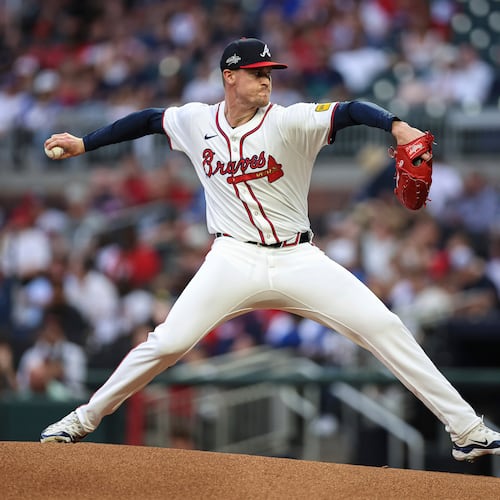For Georgia Tech and the coming season, the bottom line is that, with Josh Okogie officially headed to the NBA, it looks a bit grim. Consider that the 2017-18 team was 13-19 overall and 6-12, and now consider that three of the four best players on that team (Okogie, Ben Lammers and Tadric Jackson) won’t be on the team. That trio accounted for 56 percent of the Yellow Jackets’ scoring and 48 percent of its rebounding.
In fairness, it might be a somewhat stilted way of looking at the 2018-19 team. If everything had gone right this past season, maybe the Yellow Jackets might have been something like 20-13 instead of 13-19. If that were the case, the thought would be that a 20-team has taken a big hit, so it might drop down to .500.
But, very little went right, so instead it’s a 13-win team that has suffered major losses, creating the perception is that the ceiling is 13 wins, which is a questionable proposition. Regardless, taking stock of what the Jackets have is sobering.
There’s reason to like what the roster can become. Point guard Jose Alvarado is a tough player who, as he continues to learn the game and become a more effective distributor, will help the Jackets win games. Until he was lost for the season with a stress reaction in his shin, guard Curtis Haywood looked like he could be the perimeter threat that this team has needed for years.
At the time of his injury after eight games (he tried to come back later and played seven games before being shut down for good), he was 13-for-26 from 3-point range.
Post man Abdoulaye Gueye has some touch around the basket (50.0 percent from the field in ACC play) and made strides in his feel for the game. Stretch-4 forwards Evan Cole and Moses Wright showed glimpses at the end of last season of being contributors.
Among the incoming freshmen, guard Michael Devoe seems the most likely to step in and take on some of the scoring load left by Okogie. Guard Shembari Phillips, after sitting out last season as a transfer from Tennessee, is an athletic player who figures to help Tech play faster and provide some scoring. A guard from Wheeler High, Phillips is an X-factor; as a part-time starter at Tennessee, he averaged 6.2 points and 3.1 assists in 20.9 minutes per game. He shot 37.5 percent from 3-point range. Assuming improvement in the past year, he could be a key part of the rotation.
The problem is that, of the seven players named, only two aren’t freshmen or sophomores. Further, of the four sophomores, none played the full season in the rotation. Alvarado came the closest, starting 25 games and averaging 35 minutes before his season-ending elbow dislocation.
All seven players have plenty to learn.
Fans who were getting antsy last season as Tech struggled through injuries and other assorted maladies likely aren't going to be any happier this season. As noted by esteemed colleague Mark Bradley, Pastner said repeatedly during this past season that Year 2 was to be the hardest of the rebuild. He said this anticipating that Okogie would be back.
The sales pitch about last season being the bottom may have been premature. Without Okogie, it won’t at all be a surprise if the third season surpasses the second in the loss column, and Pastner is well aware of that possibility.
As Okogie tested the waters and Pastner contemplated life without him, the coach was already pitching the potential for this team in the fourth and fifth seasons. For fans eager to celebrate some ACC wins and watch the Jackets in the NCAA tournament (last visited in 2010), it probably isn’t much of an encouraging message. But there’s validity to Pastner’s vision.
In Year 4, Alvarado will have two seasons as a starter under his belt and could be the best point guard that Tech has had in several years. Haywood, Wright and Cole likewise will have more game experience and more strength. Devoe may have had one season as a full-time starter to build on. Devoe’s classmates, forwards Kristian Sjolund and Khalid Moore, may be getting ready to contribute.
Philips will be a senior. Center James Banks will take the court after sitting out a season following his transfer from Texas and getting tutored by assistant coach Eric Reveno, a noted developer of big men.
It would be Pastner’s first “old” team comprised of players that he had recruited and developed. He is forever using the phrase “get old and stay old,” shorthand for the vision he has for Tech to be competitive, to win with juniors and seniors that may not have been blue-chip recruits, but had the opportunity to develop over their careers into effective ACC players, and then to keep that conveyor belt moving.
That actually sounds like a team that could be pretty competitive.
As for this season, in an ideal world for Tech, Gueye and fellow big man Sylvester Ogbonda would take big strides from last season. Haywood would pick up from where he left off, shooting-wise, before his injury. Wright and Cole would develop physically and show a little more consistency. Alvarado would improve in his ability to create easy baskets for teammates. Philips would be a stopper who’s good for 10 points per game. Devoe would be the sort of impact freshman that Okogie was two years ago. Maybe a grad transfer would fall out of the sky.
It would be the makings of a team that is fun to watch develop, but one that would still be inexperienced and, at this point, lacking a proven scorer. It would be, among other things, a team for which Okogie might make an ideal centerpiece.
Instead, it appears another winter of rebuilding awaits the Jackets.
About the Author
Keep Reading
The Latest
Featured



